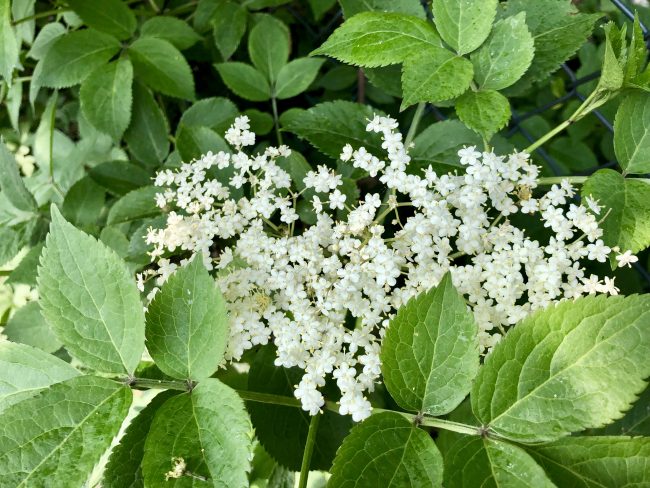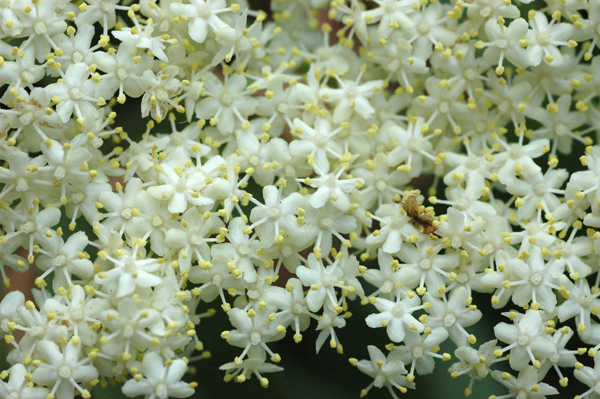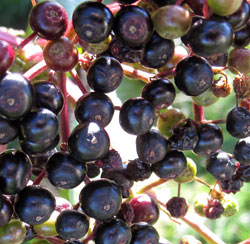Elder
The elder is common throughout the UK, being found in woodlands and hedgerows. It is also found growing on 'waste ground' and may be regarded as a 'weed' by some. The flowers of the elder are often gathered for the making of elderflower tea and the berries for elderflower wine. The flowers are much visited by insects and birds consume the berries (and assist in the dispersal of the seeds). Note : Leaves, twigs, branches, seeds, roots, flowers, and berries of Sambucus plants produce chemicals which have toxic properties, see wikipedia entry for details. The timber of elder is quite soft - but was used in the past for carving and wood whittling.
Leaf
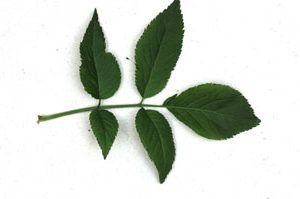
The leaf is a compound, pinnate leaf with 5 or 7 leaflets. Each leaflet is longer than it is wide. The edge of each leaflet is serrated / toothed. There are small hairs present on the underside of the leaflets. Note The leaves and stems are poisonous, see Plants for a future for details.
Buds, Bark & Stem
Young twigs are green, but as they age the outer layer turns grey. They often have distinct small brownish / beige bumps. These noticeable little bumps or lumps are breathing pores or lenticels. On older trees, the bark is often quite gnarled, grooved or corky in appearance. The buds are arranged in pairs - opposite to one another. When they burst burst after winter, the emerging leaves may have a distinct red tinge to them.
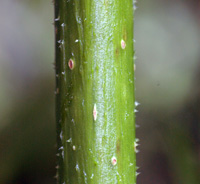
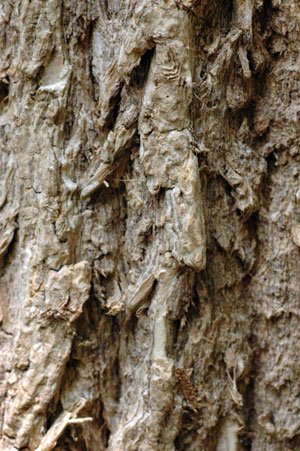
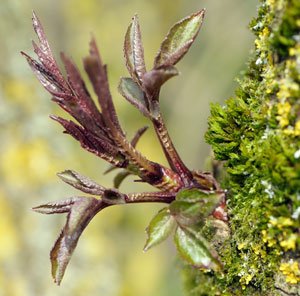
Flowers and Fruits
The tree or shrub is often covered with a profusion of tiny white flowers in the spring, which give rise to the deep purple elderberries later in the year. Elderberries are rich in deeply coloured pigments, the anthocyanidins that give elderberry juice an intense blue-purple coloration that turns 'reddish' on dilution with water. Elderberry juice can be used as a dye.
